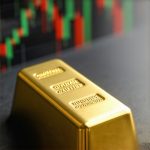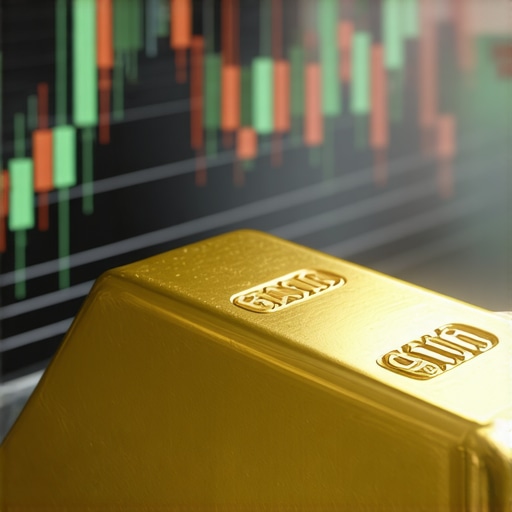Understanding Gold Demand Trends and Their Importance
Gold has long been a staple in the world of investment, often viewed as a safe haven during economic uncertainty. As an investor, understanding gold demand trends is crucial for maximizing your profits. The dynamics of gold demand are shaped by various factors, including economic indicators, geopolitical events, and market sentiments. By navigating these trends effectively, investors can position themselves advantageously in the gold market.
The Role of Economic Factors in Gold Demand
Economic stability significantly influences the demand for gold. Generally, when economies are thriving, demand for gold may dip as investors gravitate towards equities and other high-risk assets. Conversely, during times of economic downturn or instability, gold demand tends to surge as it is perceived as a reliable store of value. Understanding economic indicators and their implications for gold can help investors make informed decisions.
Geopolitical Events and Their Impact on Gold Prices
Geopolitical tensions often lead to fluctuations in gold prices. Events such as wars, political unrest, and changes in government policies can cause uncertainty, prompting investors to flock to gold. A keen awareness of global events and their potential impact on supply and demand will help investors anticipate market movements. For detailed insights, consider exploring how gold prices correlate to global events.
Trends in Consumer Demand for Gold
Consumer demand, particularly from emerging markets, is a key driver of gold prices. Countries like India and China are significant consumers of gold, especially in the form of jewelry. Tracking changes in consumer behavior in these markets can provide valuable insights into future demand. For instance, festivals and wedding seasons typically see spikes in gold purchases, impacting market dynamics. To dive deeper, check out our detailed guide on gold demand trends.
Investment Demand: A Growing Trend
In recent years, investment demand for gold has seen a notable increase, particularly through vehicles like gold ETFs and mutual funds. These investment options allow individuals to gain exposure to gold without the need to purchase physical bullion. Understanding how to approach gold ETFs for maximizing returns can be instrumental in navigating these trends effectively.
Conclusion: Staying Ahead of Gold Demand Trends
By keeping a pulse on economic indicators, geopolitical events, and consumer behavior, investors can better navigate gold demand trends and position themselves for success. Always remember that informed decisions are the key to maximizing profits in the gold market.
Investment Strategies for Gold: Making Informed Decisions
For investors looking to capitalize on gold demand trends, developing effective investment strategies is essential. Understanding how to navigate the gold market can greatly enhance your portfolio’s performance. Factors such as market fluctuations, economic indicators, and global events should be taken into account to optimize your investments.
Utilizing Gold ETFs and Mutual Funds
As mentioned earlier, gold ETFs and mutual funds have become increasingly popular among investors. These financial instruments allow individuals to invest in gold without the need to buy and store physical gold. For those new to this investment strategy, it is crucial to approach gold ETFs for maximizing returns. This includes understanding the fees associated with these funds, their historical performance, and how they align with your overall investment goals.
Diversification: A Key to Successful Gold Investment
Diversifying your investment portfolio is a fundamental strategy to mitigate risks. By including gold alongside other asset classes, investors can cushion their portfolios against market volatility. As a precious metal, gold often behaves differently than stocks or bonds, providing a hedge during economic downturns. To explore more about effective diversification strategies, check out the importance of gold in your diversified investment portfolio.
Analyzing Gold Price Forecasts: What Investors Should Know
Keeping an eye on gold price forecasts is vital for making informed investment decisions. Various factors influence gold prices, including economic conditions, geopolitical events, and central bank policies. By understanding these elements, investors can better anticipate price movements and adjust their strategies accordingly.
Central Bank Influence on Gold Prices
Central banks play a significant role in the gold market. Their policies regarding gold reserves and purchases can heavily influence prices. For instance, when a central bank increases its gold reserves, it often signals a bullish outlook, leading to higher gold prices. To learn more about the factors affecting gold prices, read about how central bank purchases influence gold prices.
Global Supply and Demand Dynamics
The dynamics of global supply and demand are crucial in determining gold prices. When demand outpaces supply, prices tend to rise, and vice versa. Monitoring mining output, recycling rates, and consumer demand can provide insights into future price movements. For a deeper understanding of these factors, consider exploring how gold prices are affected by global supply and demand.
Understanding Risks in Gold Investments
While gold can be a lucrative investment, it is not without risks. Understanding these risks is essential for any investor. Market volatility, changes in interest rates, and currency fluctuations can all impact the value of gold investments. For those looking to invest in gold, being informed about potential pitfalls can make a significant difference in your investment journey.
Mitigating Risks Through Research
Before investing in gold, conduct thorough research on market trends, expert opinions, and historical data. Staying informed will empower you to make decisions that align with your financial goals. To gain further insights, check out gold price forecast expectations and prepare for what lies ahead in the gold market.
Conclusion: Positioning Yourself for Success
By understanding gold demand trends, utilizing effective investment strategies, and remaining aware of market dynamics, investors can position themselves for success in the gold market. Whether investing in physical gold, ETFs, or mutual funds, staying informed is the key to maximizing your returns.
Exploring Gold Investment Vehicles: What Suits You Best?
When it comes to investing in gold, choosing the right vehicle is crucial. There are several options available, including physical gold, gold ETFs, and gold mutual funds. Each option has its own set of advantages and disadvantages that cater to different investor profiles.
Physical Gold: A Tangible Investment
Investing in physical gold, such as coins or bars, is appealing for those who prefer a tangible asset. This form of investment allows investors to hold the gold directly, offering a sense of security amidst market volatility. However, storage and insurance costs can add up, making it essential to weigh these factors against potential returns. For a comprehensive understanding, delve into essential gold coins to buy.
Gold ETFs: Liquidity and Flexibility
On the other hand, gold ETFs provide liquidity and ease of trading, making them an attractive option for many investors. By investing in gold ETFs, individuals can gain exposure to gold prices without the hassles of storing physical assets. Furthermore, ETFs often come with lower fees compared to mutual funds, making them a cost-effective investment choice. For more insights on maximizing your returns with ETFs, refer to how to approach gold ETFs for maximizing returns.
Evaluating Performance: Key Metrics for Gold Investments
Understanding how to evaluate the performance of your gold investments is critical. Monitoring metrics such as historical price trends, volatility, and market sentiment can help in making informed decisions. This way, you can better assess when to enter or exit your positions.
Historical Price Trends: Learning from the Past
Analyzing historical price trends offers valuable insights into how gold has performed during various economic cycles. Historically, gold has been a safe haven during times of economic uncertainty, often rising in value when stock markets decline. To gain a deeper understanding, explore gold price forecast expectations to anticipate future movements.
Market Sentiment: The Pulse of Gold Prices
Market sentiment can heavily influence gold prices. Investor behavior, driven by fear or greed, can create significant price swings. Keep an eye on news related to economic indicators, geopolitical tensions, and central bank actions, which can all impact market sentiment. For a detailed analysis of these influences, consider reading about how gold prices correlate to global events.
Long-term vs. Short-term Gold Investment Strategies
Finally, defining your investment horizon is essential. Are you looking for quick gains, or are you in it for the long haul? Your strategy will dictate how you approach the gold market.
Long-term Investment: Building Wealth Over Time
Long-term investors often take a buy-and-hold approach, capitalizing on gold’s potential for appreciation over time. This strategy is particularly effective during periods of inflation or economic downturns, where gold tends to retain its value. For insights into effective long-term strategies, check out top gold investment strategies.
Short-term Trading: Navigating Market Volatility
Conversely, short-term trading requires a keen understanding of market trends and timing. Traders may employ various techniques, such as technical analysis or chart patterns, to capitalize on price fluctuations. For those interested in refining their trading skills, explore top gold trading techniques to maximize your investment outcomes.
Understanding Gold Price Fluctuations: Key Influencing Factors
To navigate the gold market effectively, it’s crucial to understand the factors that influence gold price fluctuations. Various elements, including economic indicators, geopolitical events, and central bank policies, play significant roles in shaping gold prices. Knowledge of these factors will empower investors to make informed decisions.
Economic Indicators: The Economic Pulse
Economic indicators, such as inflation rates, interest rates, and employment figures, directly impact gold prices. For example, rising inflation often leads investors to flock to gold as a hedge against currency devaluation. Conversely, higher interest rates can reduce the appeal of non-yielding assets like gold. Staying informed about these indicators and their potential impact is vital for successful gold investing. For a deeper dive into how economic conditions affect gold, check out how global supply and demand influence gold prices.
Geopolitical Events: The Unpredictable Influence
Geopolitical tensions and conflicts can create significant volatility in the gold market. Investors often turn to gold during times of uncertainty, propelling prices higher. Events such as trade wars, military conflicts, and political instability can serve as catalysts for gold price surges. Understanding the geopolitical landscape is essential for predicting potential price movements. For insights on these impacts, consider reading how gold prices correlate to global events.
Diversifying Your Gold Portfolio: Strategies for Success
Diversification is a key strategy for mitigating risks associated with gold investments. By incorporating different types of gold assets into your portfolio, you can enhance your chances of achieving favorable returns.
Combining Physical Gold and ETFs
One effective approach is to combine physical gold investments with gold ETFs. While physical gold provides a hedge against inflation and economic downturns, ETFs offer liquidity and ease of trading. This combination allows investors to benefit from both the stability of physical gold and the flexibility of ETFs, optimizing their overall investment strategy.
Incorporating Gold Mining Stocks
Investing in gold mining stocks is another way to diversify. These stocks often perform well during rising gold prices and can provide exposure to the mining sector’s potential growth. However, they also carry unique risks, such as operational challenges and fluctuating production costs. Therefore, thorough research and analysis are essential before venturing into this area. For tips on selecting the right mining stocks, refer to why investing in gold mining stocks matters.
Future Trends in Gold Investments: What to Watch For
As we look ahead to 2025, several trends are likely to shape the gold investment landscape. Staying abreast of these trends will enhance your investment strategy.
The Rise of Digital Gold
Digital gold, or gold-backed cryptocurrencies, is gaining traction among investors seeking innovative ways to invest in gold. This trend may attract a younger demographic, driving demand and potentially influencing traditional gold markets. Understanding the implications of digital gold on overall gold investments is crucial for future planning.
Growing Interest in Sustainable Gold Investments
With increasing awareness of ethical and sustainable investing, the demand for responsibly sourced gold is on the rise. Investors are becoming more discerning about the environmental and social impacts of their investments. Embracing sustainable gold options can not only enhance your portfolio but also align with broader societal goals, creating a win-win scenario for investors.
Comprehensive FAQ Section: Your Gold Investment Questions Answered
What factors influence gold prices?
The price of gold is influenced by various factors, including inflation rates, interest rates, geopolitical events, and central bank policies. Understanding these elements can help you navigate the gold market more effectively.
Is investing in physical gold a good idea?
Investing in physical gold can be a solid strategy as it serves as a hedge against inflation and economic downturns. However, it is essential to consider storage costs and liquidity when deciding on this investment type.
How do gold ETFs compare to physical gold?
Gold ETFs offer ease of trading and liquidity, while physical gold provides a tangible asset and a hedge against currency devaluation. Combining both can optimize your investment strategy.
What are the risks of investing in gold mining stocks?
Gold mining stocks can offer significant returns but come with unique risks, such as operational challenges and fluctuating production costs. Thorough research is crucial before investing in this area.
What is digital gold, and why is it significant?
Digital gold refers to gold-backed cryptocurrencies, which are becoming popular among younger investors. This trend could shift demand and influence traditional gold markets significantly.
How can I ensure my gold investments are sustainable?
To ensure sustainable gold investments, look for companies and funds that prioritize ethical sourcing and environmental responsibility. This not only aligns with personal values but also meets increasing investor demand for sustainability.
What are the best strategies for diversifying my gold portfolio?
Diversifying your gold portfolio can involve combining physical gold, gold ETFs, and gold mining stocks. This mix allows for risk mitigation and the potential for higher returns.
How do geopolitical events affect gold prices?
Geopolitical events, such as trade wars and political instability, can lead to increased demand for gold as a safe haven, often resulting in price surges during uncertain times.
What trends should I watch for in gold investments in the coming years?
Key trends include the rise of digital gold and increasing interest in sustainable gold investments, both of which are likely to shape the future of the gold investment landscape.
Where can I find reliable information on gold investing?
Reliable information can be found on trusted websites such as the World Gold Council, Investopedia, and financial news outlets that specialize in market analysis.
Authority Resources for Gold Investments
To deepen your understanding of gold investments and stay updated on market trends, consider exploring these authoritative resources:
- World Gold Council – A leading authority on gold, providing research and insights into the market.
- Investopedia – A comprehensive resource for financial education, including articles and guides on gold investment.
- Bloomberg Markets – Offers current news and analysis on commodities, including gold.
- Reuters Commodities – Provides up-to-date information on commodity markets, including gold dynamics.
- Kitco News – A reliable source for precious metals news and market data.
Conclusion: Elevating Your Gold Investment Journey
In conclusion, understanding the intricacies of gold price fluctuations, diversifying your portfolio, and staying informed about future trends are all essential steps in maximizing your gold investment potential. By leveraging effective strategies and utilizing trusted resources, you can navigate the gold market with confidence and make informed decisions that align with your investment goals. Embrace the journey of investing in gold, and watch your portfolio flourish in response to market dynamics and innovative trends.











This comprehensive overview of gold demand trends offers valuable insights into how various factors like economic stability and geopolitical tensions influence gold’s market dynamics. I particularly found the section on consumer demand from emerging markets interesting, especially considering how festivals and cultural events drive purchasing behaviors. From my experience, keeping track of these seasonal patterns can really help in timing investments better. One challenge I’ve faced, though, is understanding how to differentiate between short-term price spikes caused by transient events versus long-term demand shifts. Have others here developed specific strategies or tools to analyze these nuances effectively? Also, as digital gold and sustainable gold investments grow, I wonder how investors can better evaluate the legitimacy and potential risks of these newer options. Overall, staying informed through authoritative sources and diversifying investment vehicles seems key for navigating these changing trends successfully.